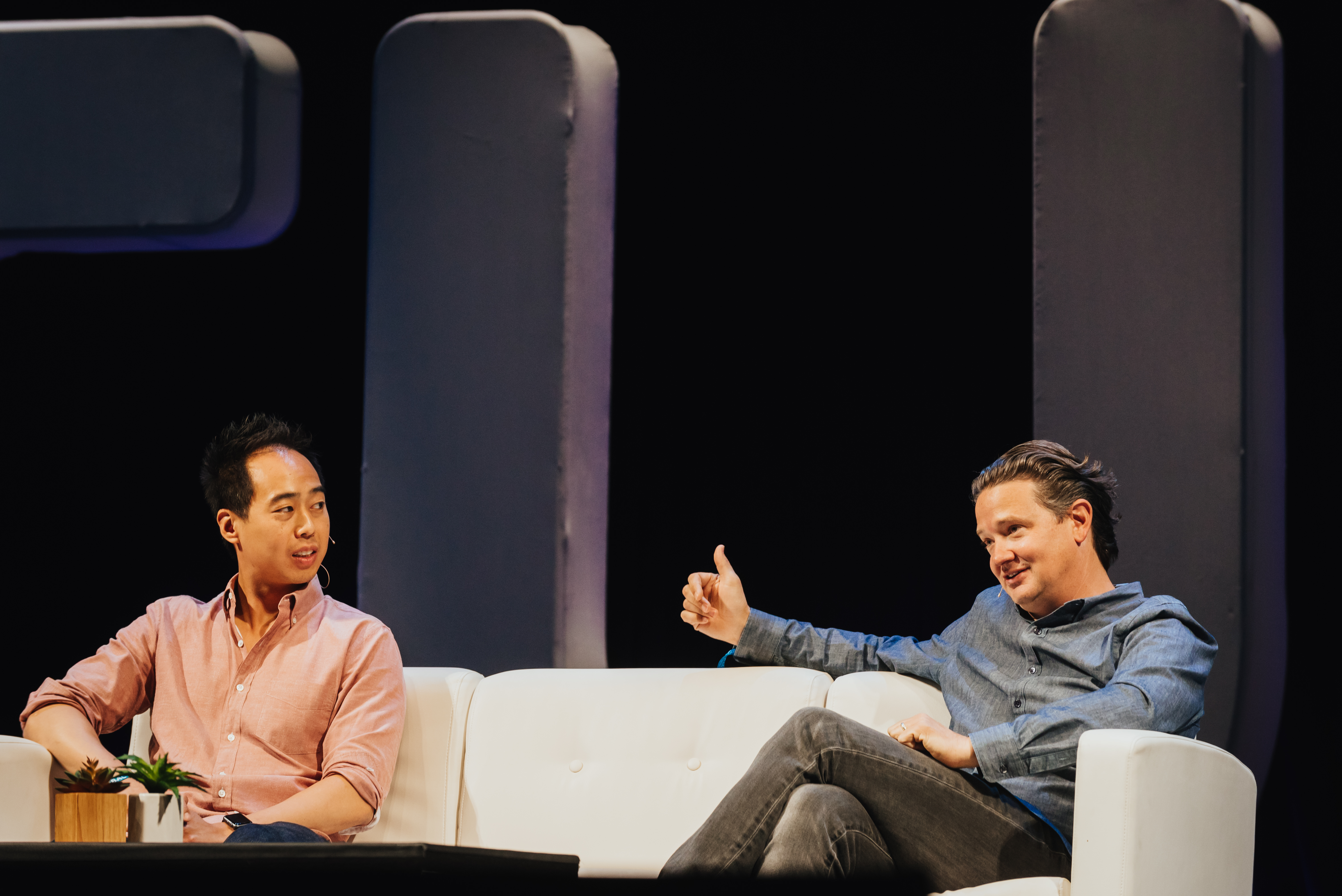Contradictory to what you thought the answer may have been, Dan followed up with this: “[T]hat [quote] is less true now than ever before, especially in the age of the digital world and in the last 15 years because technology has made it much easier to connect those dots.” With a panel of experts who connect the first move to the last in the advertising chess game, they focused on how tech can improve the relationships between marketers and their partners, and how performance marketing is influencing brand budgets across the globe.
Question: What does success look like across the diverse set of channels you’re using?
With channels ranging from social and programmatic display to job boards, TV platforms, brand ambassadors, and affiliate marketers, success can look a whole lot different depending on who you’re talking to. With that in mind, Dan asked the panelists to go back to basics and describe their key goals. Here’s how they responded:
| Sherry Lin, Growth Marketing / Operations, Lyft: “We have driver and passenger activation goals, including in each of our regions, which can get super complex. We also have a cost per incremental activation for each of our marketing initiatives that we are held to.” |
|
| Eric Lau, VP of Partner Management & Audience Development, Viacom: “We are enabling viewing wherever our users want to view content. Cable TV started with tv, but now we have all of these different apps and devices. We want to enable viewing, which increases viewership of our content, and drives ad revenue for us. There are also goals around supporting TV ecosystem, and partners in traditional cable space.” |

Image by Laurel McConnell Photography // http://www.mcconnellphoto.com
Question: What are the different data streams you’re adapting to?
| John Gibbons: “We are a data company with an e-commerce component. We are heavily focused on making sure we are organizing the data in a way that allows us to get the best view to what those outcomes are. It does become a bit fragmented when we try and combine the different verticals, which is our biggest challenge.” |
| Eric Lau: “Mobile Attribution vs. Connected TV: Mobile has a lot of great vendors and is well known. TV is a bit of a Wild, Wild West … it’s not quite there yet.“ |
|
Question: How are you partnering with technology or using the technologies you’ve built yourself?
|
| John Gibbons: “We dominantly rely on our own data. We do work with partners to help us connect with the top of the funnel, and we leverage them to visualize our data and to help us understand the data. We use those partners to help us connect the top to the bottom.” |
| Sherry Lin: “We work with three to four dozen marketing partners across both passenger and driver. We ingest that spend data into our internal system and then marry it up with our conversion data to get the cost per acquisition and ROI. We also work with a third party vendor who aggregates all of the data for us. Ingest all of that, connect the spend with the funnel metrics, and out comes the ROI.” |
Question: As new channels emerge, what are the first questions you ask to pull that data together?
| Eric Lau: “Comparing apples to apples, in relation to spend on mobile vs. [spend on] connected TV. We look at the same types of data points and metrics to keep those apples to apples. Measurement is very hard in the voice world, and it’s a tricky balance.” |
|
| Sherry Lin: “How can we connect the conversion to the actual touch point in marketing? How do we attribute this conversion? We have methods we can use to track it back to the source of the conversion, and that works for some new channels, but not all. You do the best you can given the medium.” |

Image by Laurel McConnell Photography // http://www.mcconnellphoto.com
Question: Predictions for 2019 or 2020?
| John Gibbons: “AI will take over. If we can figure out some way human creativity can supplement AI technology, it will be a force in the industry. But you have to think about how we use AI technologies to empower the creative side of things.” |
| Eric Lau: “Device graphs. It becomes a user experience question at that point. What are the different pathways of watching content? What is the right journey that creates the most viewing?” |
|
Question: If you could stop time, had infinite resources, and could solve the problem of connecting the marketing you’re doing to your own outcomes, what would you create?
| Eric Lau: “It’s actually happening right now. We’re being very methodical and specific. We are being thorough and careful in determining what business needs we are trying to solve.” |
|
| Sherry Lin: “Having an overall view of all of the touchpoints, including view base and click touchpoints, and they would be stitched with a single ID in one database. I would also have a multi-touch attribution model that accounts for incrementality at the granular level and creative level.” |
So there you have it. Metrics of success, predictions for the future, and how they’re evolving as new channels emerge. You can watch the full panel discussion here, spot yourself in this year’s #Postback18 Highlight Reel, or check out highlights and speakers from previous years.
Author
Becky is the Senior Content Marketing Manager at TUNE. Before TUNE, she handled content strategy and marketing communications at several tech startups in the Bay Area. Becky received her bachelor's degree in English from Wake Forest University. After a decade in San Francisco and Seattle, she has returned home to Charleston, SC, where you can find her strolling through Hampton Park with her pup and enjoying the simple things between adventures with friends and family.





Leave a Reply
You must be logged in to post a comment.